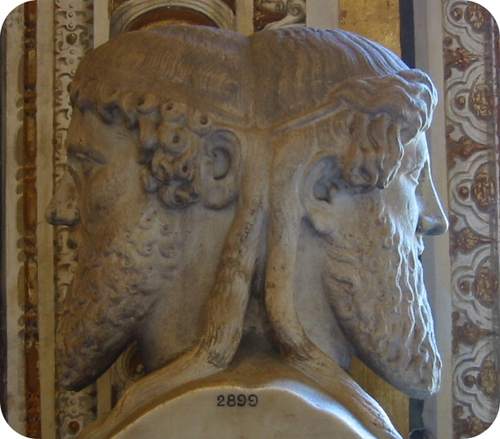Learning Objectives
- Define Brønsted-Lowry acid.
- Define Brønsted-Lowry base.
- Give examples of Brønsted-Lowry acids and bases.
- Define amphoterism.
- Define conjugate acid.
- Define conjugate base.
- Write reactions that illustrate the idea of conjugate acid-base pairs.
A new theory

The Arrhenius concept of acids and bases was a significant contribution to our understanding of acids and bases. It replaced and expanded the original idea of Lavoisier that all acids contained oxygen.
However, the Arrhenius theory had its shortcomings also. It did not take into account the role of the solvent. In addition, this concept did not deal with acid-base behavior in solvents such as benzene where there could be no ionization. So, a new theory needed to be formed, which built on the findings of Arrhenius but also went beyond them.
Brønsted-Lowry Acids and Bases
The Arrhenius definition of acids and bases is somewhat limited. There are some compounds whose properties suggest that they are either acidic or basic, but which do not qualify according to the Arrhenius definition. An example is ammonia (NH3). Its aqueous solution turns litmus blue, it reacts with acids, and displays all the other properties of a base. However, it does not contain the hydroxide ion. In 1923, a broader definition of acids and bases was independently proposed by Danish chemist Johannes Brønsted (1879–1947) and English chemist Thomas Lowry (1874–1936). A Brønsted-Lowry acid is a molecule or ion that donates a hydrogen ion in a reaction. A Brønsted-Lowry base is a molecule or ion that accepts a hydrogen ion in a reaction. A hydrogen ion is commonly referred to as a proton, and so acids and bases are proton donors and proton acceptors respectively according to the Brønsted-Lowry definition. All substances that are categorized as acids and bases under the Arrhenius definition are also defined as such under the Brønsted-Lowry definition. The new definition, however, includes some substances that are left out according to the Arrhenius definition.

Figure 1. Lone pair electrons on nitrogen.
What kind of molecule would qualify as a Brønsted-Lowry base? These molecules need to be able to accept a hydrogen ion (or proton). Two possibilities come to mind: an anion that can form a neural compound with a proton, or a molecule in which one or more atoms has lone-pair electrons. The most obvious anion is the Arrhenius base OH–. This ion can form a water molecule with a proton by accepting the proton. The acetate anion CH3COO– is another anion that can combine with a proton to form acetic acid. Lone-pair electron groups would include the nitrogen atom (see Figure 1). The two electrons at the top of the nitrogen atom are not connected in any type of bond, but they do interact readily with a bare proton.

Oxygen is another atom with lone pair electrons that can function as Brønsted-Lowry bases.
The two single electrons (to the left and bottom of the atom) can form single covalent bonds with other atoms while the two pairs of double electrons (top and right) are available to interact with a hydrogen ion.
Brønsted-Lowry Acid-Base Reactions
Which direction?
The Roman god Janus was considered the god of gates and doors, beginnings and endings. He is portrayed with two faces, looking in two directions at once. Janus would have been in a good position to look at the acid-base reactions we see in this concept, since they are equilibrium reactions involving two different forms of both acids and bases.

Brønsted-Lowry Acid-Base Reactions
An acid-base reaction according to the Brønsted-Lowry definition is a transfer of a proton from one molecule or ion to another. When ammonia is dissolved in water, it undergoes the following reversible reaction.
![]()
In this reaction, the water molecule is donating a proton to the ammonia molecule. The resulting products are the ammonium ion and the hydroxide ion. The water is acting as a Brønsted-Lowry acid, while the ammonia is acting as a Brønsted-Lowry base. The hydroxide ion that is produced causes the solution to be basic.
We can also consider the reverse reaction in the above equation. In that reaction, the ammonium ion donates a proton to the hydroxide ion. The ammonium ion is a Brønsted-Lowry acid, while the hydroxide ion is a Brønsted-Lowry base. Most Brønsted-Lowry acid-base reactions can be analyzed in this way. There is one acid and one base as reactants, and one acid and one base as products.
In the above reaction, water acted as an acid, which may seem a bit unexpected. Water can also act as a base in a Brønsted-Lowry acid-base reaction, as long as it reacts with a substance that is a better proton donor. Shown below is the reaction of water with the hydrogen sulfate ion.
So, water is capable of being either an acid or a base, a characteristic called amphoterism. An amphoteric substance is one that is capable of acting as either an acid or a base by donating or accepting hydrogen ions.
Conjugate Acids and Bases
When a substance that is acting as a Brønsted-Lowry acid donates its proton, it becomes a base in the reverse reaction. In the reaction above, the hydrogen sulfate ion (HSO 4 − ) donates a proton to water and becomes a sulfate ion (SO 4 2− ). The HSO 4 − and the SO 4 2− are linked to one another by the presence or absence of the H + ion. A conjugate acid-base pair is a pair of substances related by the loss or gain of a single hydrogen ion. A conjugate acid is the particle produced when a base accepts a proton. The hydrogen sulfate ion is the conjugate acid of the sulfate ion. A conjugate base is the particle produced when an acid donates a proton. The sulfate ion is the conjugate base of the hydrogen sulfate ion.
In the reaction illustrated below, water serves both as acid and base simultaneously. One water molecule serves as an acid and donates a proton. The other water molecule functions as a base by accepting the proton.

Figure 2. Water molecules as a conjugate acid-base pair.
A typical Brønsted-Lowry acid-base reaction contains two conjugate acid-base pairs as shown below.
One conjugate acid-base pair is HNO 2 / NO 2 − , while the other pair is HPO 4 2− / PO 4 3− .
Summary
- Conjugate acids and bases are defined.
- Examples of conjugate acid-base pairs are given.
- Brønsted-Lowry acids and bases are defined.
Practice
Read the material at the following link and answer the following questions: http://www.chemteam.info/AcidBase/Bronsted-Lowry-AcidBase.html
- Why is water considered a base in the reaction between water and HCl?
- Why is H3O+ considered an acid?
- Why is the chloride anion considered a base?
Review
- In the reaction between ammonia and water, how does the ammonia serve as a base on the left-hand side of the equation?
- How does the ammonium ion serve as an acid on the right-hand side of the equation?
- Write the conjugate acid-base pairs for the reaction between two water molecules illustrated above.
- What is a Brønsted-Lowry acid?
- What is a Brønsted-Lowry base?
- How does ammonia function as a Brønsted-Lowry base?
Glossary
- amphoteric substance: One that is capable of acting as either an acid or a base by donating or accepting hydrogen ions.
- conjugate acid: The particle produced when a base accepts a proton.
- conjugate acid-base pair: A pair of substances related by the loss or gain of a single hydrogen ion.
- conjugate base: The particle produced when an acid donates a proton.
- Brønsted-Lowry acid: A molecule or ion that donates a hydrogen ion in a reaction.
- Brønsted-Lowry base: A molecule or ion that accepts a hydrogen ion in a reaction.